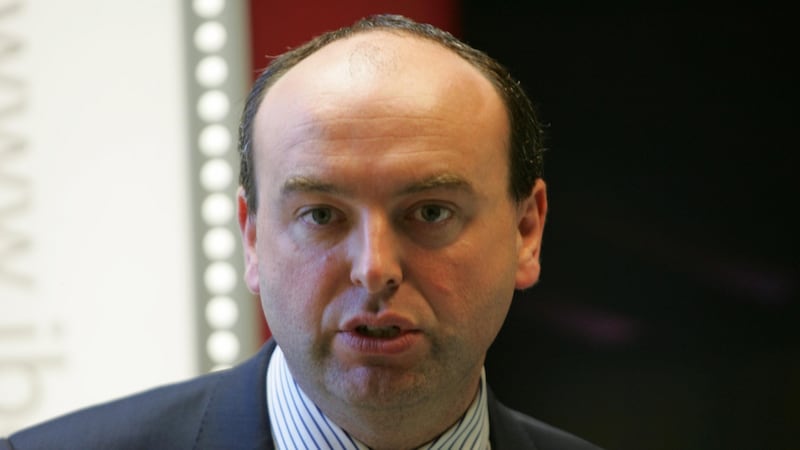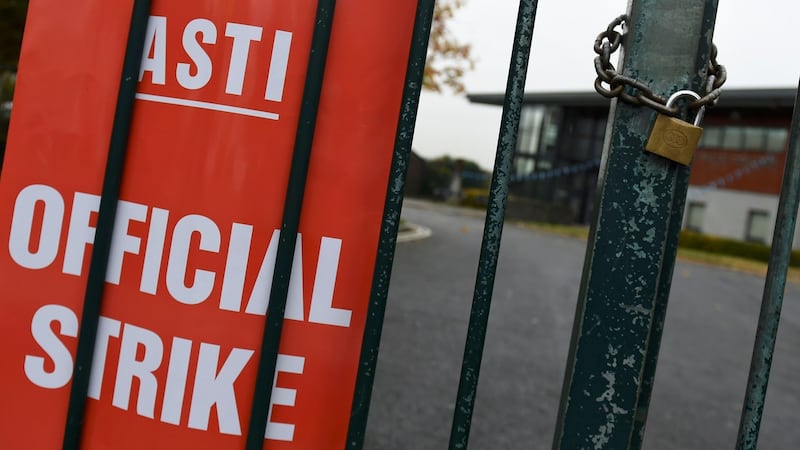There are perhaps several reasons for the current climate of industrial unrest.
Some blame the State’s headline rate of economic growth, which has been rebounding strongly, for creating unreasonable expectations.
Others point to income inequality and a nagging grievance that the average taxpayer was left carrying the can for irresponsible elites after the crash.


Then there is the cost of living, the reason most cited by those pressing for accelerated pay restoration across the public sector.
As measured by the Consumer Price Index, the cost of living in Ireland is actually falling, albeit the index is skewed by car sales and transport costs.
Big-ticket items such as rents, childcare and car insurance are widely acknowledged to be out of kilter with average incomes and prohibitive by European standards.
Either way, there is a formidable list of unions demanding a swifter return to pre-crash pay rates, and the recent Labour Court ruling on Garda pay has only strengthened their sense of entitlement.
Even if the Government was minded to loosen the purse strings in the face of such an onslaught it has little room for manoeuvre.
Currently about a third of the Government’s € 60 billion annual spend goes on public sector pay and pensions, making it the single largest item of expenditure.
However, the European Growth and Stability Pact sets strict limits on additional budgetary spending.
For example, it limited the Government in the recent budget to a miserly € 1 billion adjustment despite the tax bounty from accelerated economic growth.
The Government breached this expenditure benchmark by € 200 million because of an additional EU budget contribution necessitated by our revised 26 per cent growth rate for last year.
While the technical breach will most likely be overlooked by Brussels on account of the oddities surrounding Ireland's growth metrics, spending for 2017 is well beyond the upper limit and it's therefore hard to see how an additional € 50 million for Garda pay might be accommodated.
In the past, the Government used supplementary spending estimates to circumvent the rules and tag on additional money but this avenue is now firmly closed.
If that wasn’t bad enough the expenditure horizon for 2018 is even more curtailed.
While Department of Finance’s latest Economic and Fiscal Outlook report suggests the fiscal space available for Budget 2018 will be in the region of € 1.2 billion, there is a big caveat.
The report admits the full-year “carry over impact” of changes made in Budget 2017, such as the pension increase and the cuts to universal social charge (USC), which don’t come into play until March, will eat up € 645 million of the fiscal space for 2018.
This leaves room for a budgetary adjustment of just € 555 million in 2018, barely 1 per cent of the annual current spend – such are the strictures now placed on EU national budgets in the wake of the financial crash.
A 2 per cent pay hike across the public sector on top of the Lansdowne Road terms would cost roughly € 300 million, leaving little for spending elsewhere on frontline services or welfare increases.
Such a move would also kick the Government’s plan to phase out the USC into touch.
The reduced USC rates and thresholds in Budget 2017 took up the lion’s share of the Government’s € 300 million tax package and are expected to cost the same again in 2018.
The Government’s fiscal space calculations are also predicated on the shifting sands of economic forecasts, which are now subject to a high degree of uncertainty because of Brexit.
In its recent autumn economic statement, the Department of Finance shaved approximately € 1.2 billion off the fiscal space available for 2019, 2020 and 2021 to take account of the UK's vote and the likely drag on Ireland's export-led economy.
However, this may need to be looked at again if Britain opts for a hard Brexit, a scenario that is becoming increasingly more likely.
The Irish Fiscal Advisory Council also believes the Government has significantly underestimated the cost of maintaining the existing level of public services in the face of natural demographic forces.
The council believes about € 4.5 billion of the fiscal space over the next five years will be needed just to “stand still” even before additional budgetary measures can be considered.
Infrastructure
Separate from the debate over public pay but relevant is the issue of capital spending on badly needed infrastructural projects in transport, housing and water, which lags behind competitor countries.
Ibec’s head of policy Fergal O’Brien says the people affected by rising rents and costly childcare bills represent only a certain segment of the workforce, the inference being that not all workers are under the same pressures.
Hence, he says the Government would be better off tackling these cost of living issues separately, perhaps through some new form of social partnership rather than diminishing competitiveness by accelerating pay rates for all.
“We made this mistake before the crash where excessive wage increases were granted on the back of rising house prices and rising housing costs.”
This just ratcheted up costs and prices at the other end, he says.
“What we should be doing now from a policy perspective is going to the source of the cost driver instead of dipping into the pot to compensate certain civil servants for cost of living expenses.”
O’Brien says the current budgetary arithmetic simply doesn’t allow for the public sector wage demands without choking off spending on other vital services.
“If we do this in a free-for-all manner with leapfrogging across the public sector the Government is going to spend an awful lot of money but buy very little.”
He believes the fairest way to resolve the current impasse is to initiate a national conversation – a re-energised social partnership – which could decide what the economy needs and how certain cost-of-living issues should be addressed.
Tom Healy, director of the trade union-backed Nevin Economic Research Institute (Neri) says the think tank is agnostic on whether the Government should give in to public sector pay demands ahead of the agreed Lansdowne timetable.
Borrowing
However, he said the money to meet these demands can only come in one of three ways; either through additional Government borrowing; spending less in certain areas; or by raising extra revenue.
He rules out the first two on the grounds that borrowing for current spending is economically frowned upon, while the possibilities for clawing back money from current outlay on pay and services across the public sector is not feasible given the current demands.
The “only logical solution” is to raise revenue elsewhere, he says, suggesting a modest amount of money could be squeezed from the proposed clampdown on commercial property tax loopholes.
Healy also suggests accelerating the pay hikes due to public sector workers by three months next year might be a compromise the Government could afford.
Arguably the most prosperous economic period of recent times was in the latter half of the 1990s and the early 2000s, where strong growth rates on the back of an export boom wiped out a near 20 per cent unemployment rate, cut poverty levels and improved living standards for most.
In contrast to now, it was a period marked by the lack of industrial unrest.
The Government faces perhaps it biggest challenge in trying to hold the line on the Lansdowne Road agreement. Its reputation as weak administration beset by infighting will either be vindicated or overturned by how it handles the current standoff.










